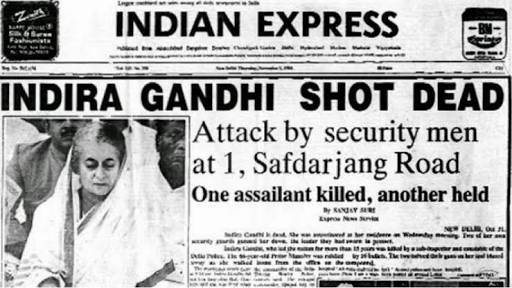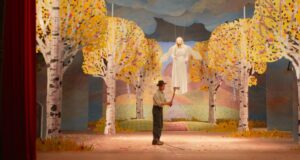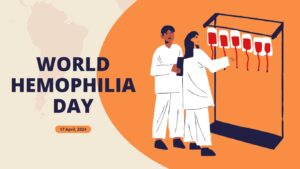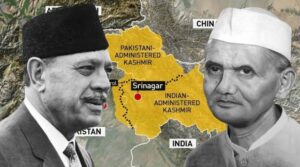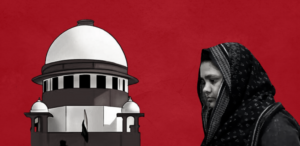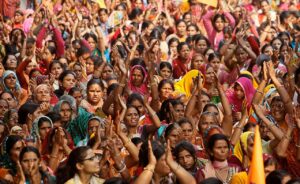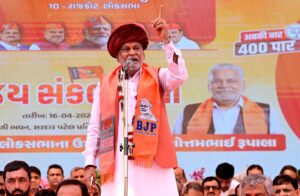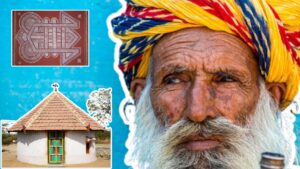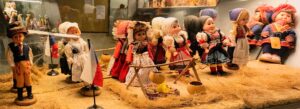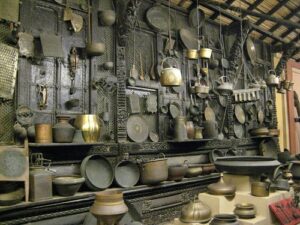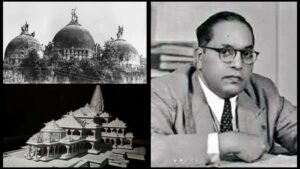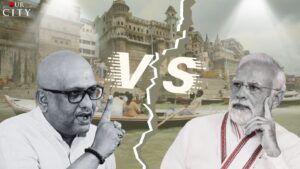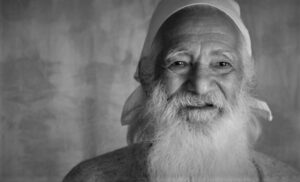“Khoon ka badla khoon, khoon ka badla khoon. Indira Gandhi amar rahe!”
“Jab tak sooraj chand rahega, Indira tera naam rahega, Indira Gandhi amar rahe!”
“Bharat Mata ki jai, bolo Bharat Mata ki jai, Indira Gandhi amar rahe!”
On this day today in 1984, at around 1:45 p.m., an Indian news agency broke the startling news that “MRS GANDHI IS DEAD.” Indeed, a few hours later, enraged crowds paraded through the streets, vowing revenge on Sikhs, and the Hindi slogans you just read resonated across practically every street and corner of Delhi and some parts of north India. Thus, the assassination of Indira Gandhi set off a chain of events that would undoubtedly rank among the deadliest religious riots in the Indian history.
Spine Chilling Scenes
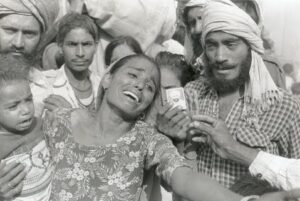 Thousands of Sikh men, women, and children were brutally murdered in the anti-Sikh riots that broke out after the assassination. Delhi had already seen rampant killings dedicated to different rulers. Sikhs were forcibly removed from trains and buses and subjected to iron rod beatings till they died. Sikhs gathered in public squares and streets were set on fire after being garlanded with tyres drenched in kerosene. Sikh-owned businesses, industries, properties, and residences were invaded by enraged crowds, who then ransacked them and carried their residents outside to be killed.
Thousands of Sikh men, women, and children were brutally murdered in the anti-Sikh riots that broke out after the assassination. Delhi had already seen rampant killings dedicated to different rulers. Sikhs were forcibly removed from trains and buses and subjected to iron rod beatings till they died. Sikhs gathered in public squares and streets were set on fire after being garlanded with tyres drenched in kerosene. Sikh-owned businesses, industries, properties, and residences were invaded by enraged crowds, who then ransacked them and carried their residents outside to be killed.
Before the entire family was murdered with knives, iron rods, or fire, Sikh women and daughters were raped in front of their husbands, fathers, sons, and elders. The sacred book of Sikhism, the Sri Guru Granth Sahib Ji, furnishings, carpets, and the old priests in charge were all piled together and set ablaze in the Gurdwaras. Enraged thugs brutally undid Sikh men’s turbans and used them as a means of strangling the wearers to death.
The Bleeding Punjab
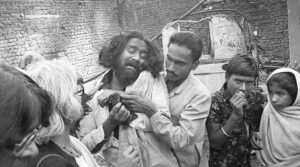 Without a doubt, the scene in Delhi following the killing was appalling beyond words. Whenever a Sikh was sighted, the enraged mobs would celebrate and race against one another to seize the chance to kill the Sikh. Sikhs’ dead remains were stacked up in squares and streets, where the murderers danced around the bodies while yelling, “Indira Gandhi zindabad!” at rituals. Khushwant Singh gave a detailed account of his experiences in his book ‘My Bleeding Punjab’:
Without a doubt, the scene in Delhi following the killing was appalling beyond words. Whenever a Sikh was sighted, the enraged mobs would celebrate and race against one another to seize the chance to kill the Sikh. Sikhs’ dead remains were stacked up in squares and streets, where the murderers danced around the bodies while yelling, “Indira Gandhi zindabad!” at rituals. Khushwant Singh gave a detailed account of his experiences in his book ‘My Bleeding Punjab’:
“I awaited my turn. I felt like a partridge in a partridge shoot waiting to be flushed out of the cover and shot on the wing. For the first time I realized what Jews must have felt like in Nazi Germany….
“Get out of your place,” was the repetitive advice (to the writer by his well-wishers.)
But go where and how? They were killing Sikhs in trains, buses, taxis, scooters.
The killings assumed the proportion of genocide of the Sikh community.”
Sikh’s Political Isolation
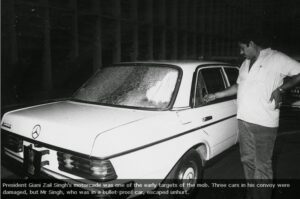
Not even Sikh President Zail Singh was exempted from the enormous fury. Angry mobs yelling “Sardar gaddar hai!” severely stoned and smashed his march, which was a convoy of automobiles that escorted his presidential car, as he was being driven to the AIIMS hospital on the news of Indira Gandhi’s passing. “Giani murdabad!” and “Sikhs are traitors!” “Zail Singh, Giani, must go!” Three of the President’s automobiles suffered serious damage, but he was unharmed.
The Sikh community, particularly those in Delhi, had to endure four days of unimaginable suffering, knowing that death would strike at any moment and would not give them any notice. Later investigations and eyewitness accounts revealed that many of the attacks against the Sikh community were mostly carried out by prominent members of the Indian National Congress, which only served to increase the suffering and anguish. These influential members, some of whom were Cabinet Ministers and Members of Parliament, generously donated weapons, paraffin and cash awards.
Awards for Every Sikh Killed
In addition, those Congress officials would stir enmity among the masses at rallies staged in public spaces, promising money awards for every Sikh killed. Furthermore, rather taking action to put an end to the violence against Sikhs, the police actually took part in it. Sikhs apparently had little chance of escaping their deadly fate since several Congress party leaders had allegedly leaked voter lists and school registration papers, making it simpler for Sikhs to be located.
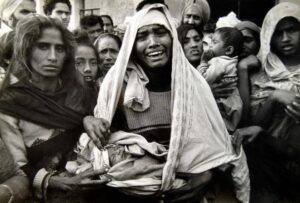 It goes without saying that throughout Delhi and the adjoining areas, constant cries were accompanied by awful laughing. In Delhi, it was difficult to find a public plaza or main street without blood all over the place. The 1984 anti-Sikh riots, which lasted for around four days, are unquestionably among the worst periods in Indian history, and particularly in the history of the Sikh religion. In reality, the Delhi High Court declared in a 2009 ruling on a riot-related case:
It goes without saying that throughout Delhi and the adjoining areas, constant cries were accompanied by awful laughing. In Delhi, it was difficult to find a public plaza or main street without blood all over the place. The 1984 anti-Sikh riots, which lasted for around four days, are unquestionably among the worst periods in Indian history, and particularly in the history of the Sikh religion. In reality, the Delhi High Court declared in a 2009 ruling on a riot-related case:
“Though we boast of being the world’s largest democracy and the Delhi being its national capital, the sheer mention of the incidents of the 1984 anti-Sikh riots in general and the role played by the Delhi Police and state machinery in particular makes our heads hang in shame in the eyes of world polity.”
(Source: Wikipedia)
Regarding the horrific assassination of Indira Gandhi, the magnificent lady and Prime Minister who was often referred to as Mother India, one would often remember the hilarious remarks she had made the night before her death at a political gathering in Bhubaneswar:
“If I die today, every drop of my blood will invigorate the nation.”

